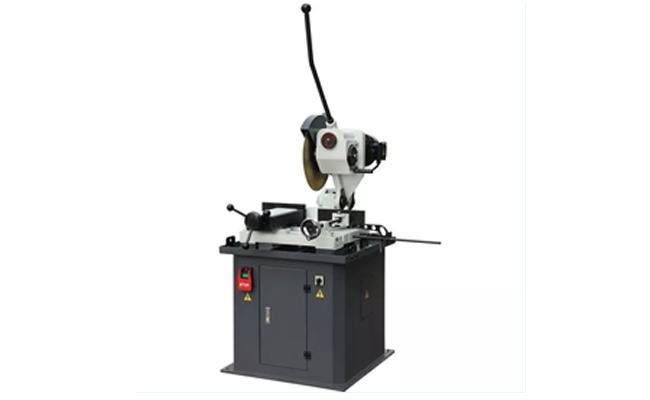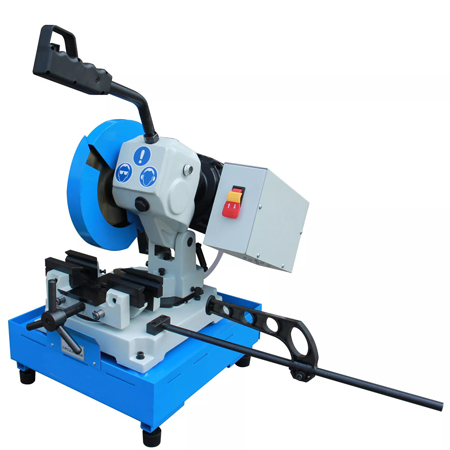BS-916VR Metal Cutting Bandsaw
Cutting Capacity :
The core philosophy for a beginner should be: “Buy a good quality, entry-level saw that won’t frustrate you, and spend the rest of your budget on a few quality blades.” A cheap saw with a bad blade is a nightmare; a decent saw with the right blade is a joy to use.

Key Features to Look For in a Beginner Band Saw
Size & Power: Look for a saw in the 10-inch to 14-inch category. The “inch” size refers to the distance from the blade to the column, which determines the width of wood you can cut.
10-inch: Perfect for small shops, model making, and cutting thin stock.
14-inch: The sweet spot. It’s the most common size, powerful enough for resawing (splitting a board thickness-wise), and has a huge aftermarket for accessories.
Motor: 1/2 HP to 3/4 HP is ideal for a beginner. It provides enough power for most hardwoods up to 4-6 inches thick without stalling.
Throat Capacity: This is the distance from the blade to the vertical column. 12 to 14 inches is great, allowing you to cut decently sized panels.
Table Size & Tilt: A larger cast-iron table is more stable. Ensure it tilts for bevel cuts (at least 45°).
Ease of Adjustment: This is critical! Look for a saw where the blade guides (the parts that keep the blade stable) are easy to access and adjust. Ball-bearing guides are a significant upgrade over simple blocks.

Top Recommendations for a Beginner Band Saw
Here are three excellent choices at different price points.
1. The Best Overall Value: RIKON 10-3061 (14-inch)
Why it’s great for beginners: This is often considered the king of the “prosumer” entry-level 14-inch saws. It comes with a 1/2 HP motor, a built-in light, a fence, and excellent ball-bearing blade guides right out of the box. It’s well-built, reliable, and has enough power for resawing up to ~6 inches, which is a key skill as you advance.
Best For: The beginner who is serious about the hobby and doesn’t want to outgrow their tool too quickly.
2. The Best Budget Buy: WEN 3962 (10-inch, 2-Speed)
Why it’s great for beginners: The price is the main attraction. Despite its low cost, it’s a surprisingly capable saw for its size. It includes a stand, a fence, and a miter gauge. The two-speed operation (1520/2620 FPM) lets you slow it down for cutting metal (with the correct blade) or speed it up for wood. It’s perfect for small projects, curves, and cutting thin stock.
Best For: The hobbyist on a tight budget, someone with very limited space, or a person who will only use it occasionally for light-duty tasks.
3. The Best for Small Spaces & Precision: SKIL 3386-01 (9-inch)
Why it’s great for beginners: This is a fantastic benchtop model. It’s compact, lightweight, and has a great feature set for the price, including LED lighting and a built-in dust port. Its small size makes it easy to store and move around. It’s perfect for detailed scrollwork, cutting small parts, and plastic/light metal (with the right blade).
Best For: Apartment dwellers, model makers, and anyone who needs a highly portable, “second” saw for fine work.
| Feature | RIKON 10-3061 | WEN 3962 | SKIL 3386-01 |
|---|---|---|---|
| Type | 14-inch Floor Stand | 10-inch Floor Stand | 9-inch Benchtop |
| Motor | 1/2 HP | 3.5 AMP | 2.5 AMP |
| Throat Capacity | 13-3/4″ | 9-3/4″ | 9″ |
| Max Cutting Height | 6″ | 4-3/4″ | 3-1/2″ |
| Best For | All-around workshop use | Budget-conscious beginners | Small, precise work & portability |
| Price Point | Mid-Range | Budget | Budget |
Cutting Capacity :
Cutting Capacity :